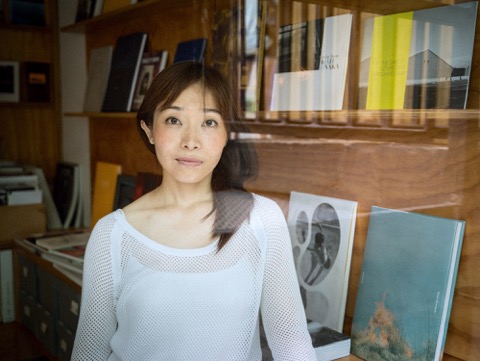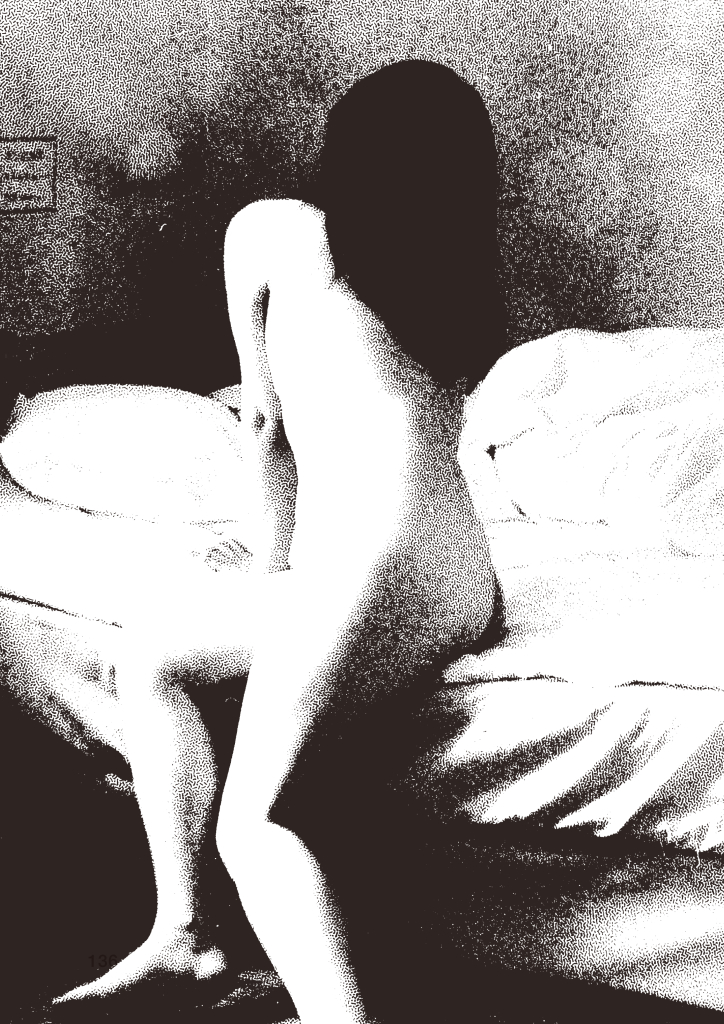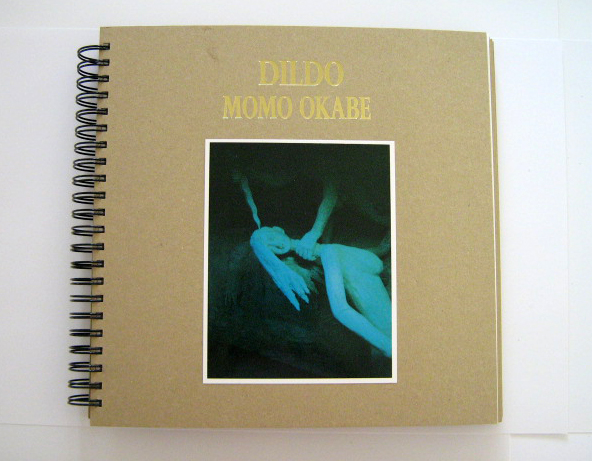Mar 14, 2016 8 Questions With: Miwa Susuda
If you have ever perused the shelves at New York’s preeminent photography bookstore, Dashwood Books, then you have likely already had the pleasure of engaging in spirited conversation with Miwa Susuda. As photobook consultant at Dashwood for the past ten years, Miwa is as widely respected as she is known for both her knowledge and contributions to contemporary photography and the photo book medium.In 2011, Miwa made the jump from purveyor to publisher, founding Session Press– becoming dedicated to introducing contemporary and historical works by both emerging and established Japanese and Chinese photographers. Functioning like a collective, Session Press brings photographers, designers, writers, and editors together to produce its limited edition artist books.
1. Hi Miwa, can you tell me a little bit about your background and where you are from?
When I was in high school, I was into The Analects of Confucius in ancient Chinese language and Chinese modern literature. I was really stunned and impressed by the clarity and richness of their teachings. One of the quotes that I am moved by and I want to follow is:
吾十有五而志於學,三十而立,四十而不惑,五十而知天命,六十而耳順,七十而从心所欲,不逾矩。
At fifteen my heart was set on learning; at thirty I stood firm; at forty I had no more doubts; at fifty I knew the will of heaven; at sixty my ear was obedient; at seventy I could follow my heart’s desire without overstepping the boundaries of what was right. (quote taken from wikipedia)
When it is translated into English, it sounds really flat and less cool, but as a Japanese person, reading these beautiful Chinese words is pretty powerful and it appeals to me significantly (if you know Japanese language, you notice that our language is pretty atmospheric but I find Chinese is very precise and logical. I was totally fascinated by their language.) So, after I encountered this quote, I started thinking about my life and future and decided to work in art and further devote my life to art no matter how long it takes!
I only applied to Universities where the philosophy major was strong. I didn’t want to go to Art History or Sociology departments since I thought that I could memorize what has happened in art history/world history by reading the books on my own. I thought it would be more important to understand the development of aesthetics in philosophy and I thought that philosophy must be the basis of all other subjects. Without mastering philosophy, I felt as if I would lose everything.
In college I didn’t very well except when it came to Kant, Sartre and Wittgenstein’s classes. But I played hard and worked hard. I had 3-4 part time jobs so that I could go to a professional school for GMAT and TOFLE- I was already thinking of coming to the US to gain more practical studies and experience in art since studying philosophy was great but I knew that learning through school alone would not be good enough.
2. How did you become involved at Dashwood Books?
That’s a long story… I came to New York and received a Masters of Art degree in Museum Studies hoping to get a job in art. Back then, my foreign status in the US was as a student, and I had to look for a sponsor to support my working visa. Although I was working at various art organizations part time or as an intern- including Japan Society, Asia Society, Brooklyn Museum, Christies’s and so on- I could not find any company to support my status.
So, I ended up working at a lawyer’s office and my boss at the time was so kind that he sponsored my green card. I became known as one of the best paralegals in New York, and although I enjoyed my work, eventually I could not continue to hide my strong ambitions for art. A couple of years after receiving permanent residence status in 2003, I started looking for a job in art again.
With my earlier art world failures in mind, I knew I had to have a more careful plan this time. I decided that I would focus on a career in photography, since Japanese photography is very well respected, and photo books in particular were still young in the medium’s history. I thought that I might have a chance to excel by working hard in this field.
So, after 8 months of applying for jobs and sending over 200 resumes, I started working at Bruce Silverstein Gallery, interning under Mr. Silverstein and the gallery’s director, Kim Bourus. Kim is now the director of her own gallery, Higher Pictures (the most important contemporary photography gallery in NYC) and she was the one who introduced me to the owner of Dashwood Books, David Strettell, eventually leading to my getting hired there. That’s how I started working at Dashwood 10 years ago!
3. Your expertise of photography has been mostly self taught- how has your work evolved over the years since joining Dashwood?
When I first joined Dashwood Books 10 years ago, I really didn’t know anything about photo books or photography in general. Every night, I opened Martin Parr’s “The Photobook” to learn as much as I could and also studied Andrew Roth’s “The Book of 101 Books” at the New York Public Library (I wish I owned Roth’s book but it is out of print and too expensive to buy now. It is a really great reference for anybody who seeks a career in photography- highly recommended.)
Soon I got the idea that I wanted to be more involved in photography for people in Japan and collectors in America and Europe through writing. I have been interviewing my favorite American photographers (Nick Waplington, Alec Soth, Jim Goldberg, Mitch Epstein, Jason Nocito and Michael Schmelling) through Japanese web magazines such as Fraction Magazine Japan and dia STANDARD for Japanese audiences. For American and European collectors, I introduce emerging Japanese photographers and write reviews on my blog and also contribute essays to Photobookstore occasionally. Melanie at Photoeye also kindly invited me to contribute “Best Book of the Year” and “Book of the Week” articles from time to time, and she has given me a wonderful chance to explore my thoughts on her site.
In June I will travel to Rochester with Helka Aleksdóttir to present Japanese and Chinese photography at Visual Studies Workshop’s Photo-Bookworks Symposium. Beginning this year I will also become a reporter for IMA magazine, where I have just finished an essay about Ryan McGinley and his early influences. Which by the way, was a tough task since his work is still new and historically not well documented compared to the old masters. But I managed to write about it by researching archival material and also connecting his early influences through associations with Dash Snow and Dan Colen with the previous underground movement in New York like Robert Mapplethorpe, Patty Smith and Andy Warhol’s Silver Factory.
I am very happy that I am helping to build a bridge in photography between Japan and America through my job at Dashwood, and through writing and lecturing. Everything has been possible because of the people I have met and especially my boss, David.
4. What led you to start Session Press and become a publisher yourself?
Connecting to the previous question, the trajectory of my work has evolved over the years and I began just wanting to be a great photobook consultant and wanting to do something for people in Japan through my experience at Dashwood Books.
Then I came up with the idea that to become a publisher myself, specializing in Japanese and Chinese photography. I am from the same background as the photographers, so that I thought that I could introduce their work to Dashwood clients in the best possible and most respectful way.
I can’t thank my boss David enough for his generosity in having me at Dashwood for such a long time. This experience has enabled me to establish and act on my own ideas. At Dashwood, I am very excited to be a part of the real interactions that occur there, as opposed to interactions online. I believe true passion and appreciation can be achieved only through a real interaction with your eyes, hands, ears, and people you talk to. It requires all the senses.
5. What qualities do you look for when choosing an artist to work with?
I love work which shows who the artist is one hundred percent. No hiding. I love work in which the photographer’s relation to the subject is real, pure and raw.
Anybody can take a beautiful photograph to a certain degree, due to advanced technology of the digital camera. But it still shows everything about the person who took the photograph. Just like our bodies, we consist of the same elements- two eyes, two legs- but nobody looks exactly same. The same goes for our notion of happiness and life. Everybody has a different take. I respect all photography just as I respect all the people. There is no better or worse. It is just different. Work doesn’t always have to be monumental or transcendent. Pureness in work, I think, is the most important element to make the other people moved.
6. Tell me about your work with Momo Okabe, who you have published two projects with.
Momo Okabe is very strong and aware of what she is doing. She takes photographs of her subjects because she truly loves that person and the scenery that she comes across. I adore her strength as an artist and person. Through her work, I feel I gained confidence of who I am and how I appear. I am very drawn to her work and I worked very hard for her exhibition at FOAM last August and two publications (Bible and Dildo) because I truly believe that she is such a talent, and I want to tell people how wonderful her work is. Encountering her work was definitely an important turing point in my life.
7. What is your favorite recent photo book?
My book with Daisuke Yokota, “Taratine”. I am not much of self promotional type, but I am not kidding. “Taratine” is the one of the greatest books I have seen for the last 10 years. It is not because of me, but because of all the people who were involved including Geoff Han, the designer, who worked so hard that he went to the printer in Belgium (die Keure) and oversaw all the production himself. We discussed the book morning and night for many months.
It was an intense process, and I fought with him a lot only because I trust him and I knew that both of us were very serious about making a great book for Daisuke. Geoff is a remarkable designer and I respect him very much. We exchanged many of our ideas from different perspectives and that’s how “ Taratine” came out. I truly appreciate my team, Marc Feustel, Daniel Gonzalez and Yoshi Shiraishi. Most importantly, I truly appreciate that Daisuke has given me an original idea for “Taratine” and patiently worked with us for a long time. Daisuke and I met 4 years ago at the cafe in Takashimaya, Shinjuku, Tokyo and since then, we have built up this publishing project together very carefully. I think he is a very important photographer and I am honored to work with him.
8. Finally, what are you working on next for Session Press?
I am working on Ren Hang’s new book he made during his artist residency in Greece. It is called “Athens Love”. This is the second book from Session Press with Ren Hang and part of a trilogy. The first one was about his New York work, and I am very excited about this new work in Athens because I have seen him grow quite a bit from the first book and become more fearless and stronger as an artist. Please come to Dashwood for his book signing on March 25 and celebrate his beautiful new publication with us. Also please don’t miss his exhibition “Athens Love” at Klein Sun Gallery. I think Ren is a very exciting talent from China right now and I am excited to work with him.





